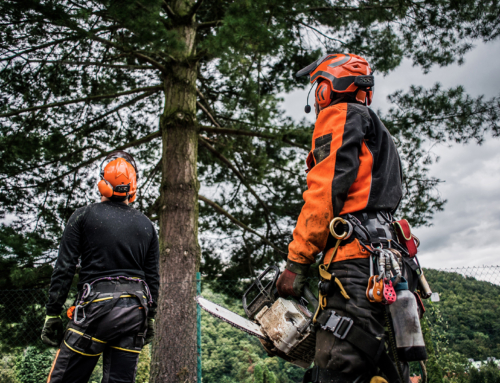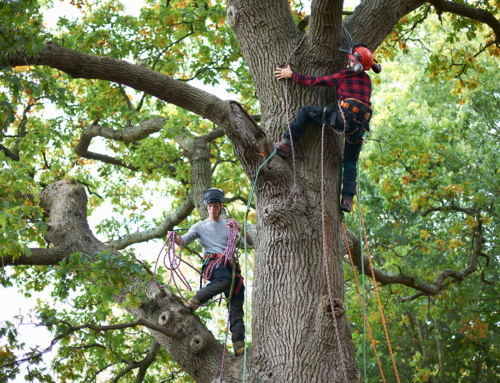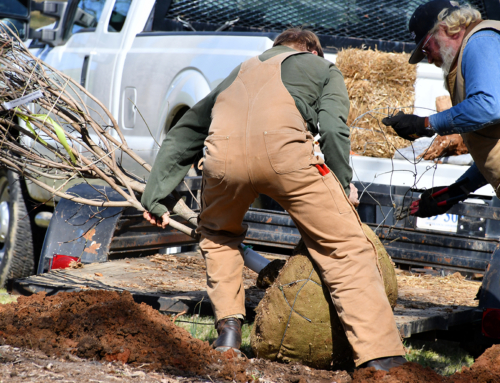Understanding Tree Thinning
Tree thinning is a forestry practice that involves the strategic removal of select trees from a forested area. This process is carried out to improve the overall health and vigor of the remaining trees, as well as to reduce the risk of wildfires. By removing certain trees, the remaining ones are able to access more resources, such as water, sunlight, and nutrients, which allows them to grow stronger and more resilient.
In the context of Bishop, CA, tree thinning has become an increasingly important practice due to the region’s susceptibility to wildfires. As climate change continues to exacerbate the severity and frequency of these natural disasters, it is crucial for landowners and forest managers to take proactive steps to mitigate the risks. Tree thinning is one of the most effective strategies for achieving this goal, as it helps to create natural firebreaks and reduce the overall fuel load in the forest.
Moreover, tree thinning can also have a positive impact on the ecosystem as a whole. By promoting the growth of healthier, more robust trees, this practice can help to preserve the biodiversity of the region, as well as the aesthetic and recreational value of the natural landscape. In Bishop, CA, where outdoor activities and eco-tourism are important economic drivers, maintaining the health and beauty of the local forests is of paramount importance.
Benefits of Tree Thinning in Bishop, CA
One of the primary benefits of tree thinning in Bishop, CA is the reduction of wildfire risk. By removing select trees, the overall fuel load in the forest is decreased, making it more difficult for fires to spread rapidly. This is particularly important in areas where homes and other structures are in close proximity to forested areas, as it can help to protect these valuable assets from the devastating effects of wildfires.
In addition to reducing fire risk, tree thinning can also improve the overall health and resilience of the remaining trees. When trees are overcrowded, they are forced to compete for limited resources, such as water and nutrients. This competition can lead to stunted growth, increased susceptibility to pests and diseases, and even tree mortality. By thinning the forest, the remaining trees are able to access more of these essential resources, allowing them to thrive and grow stronger.
Another key benefit of tree thinning in Bishop, CA is the enhancement of the local ecosystem. By removing select trees, the practice can help to create a more diverse and balanced forest, with a greater variety of plant and animal species. This, in turn, can contribute to the overall biodiversity of the region, which is crucial for maintaining the delicate balance of the local environment. Additionally, the increased access to sunlight and resources can promote the growth of understory vegetation, which can provide valuable habitat and food sources for a wide range of wildlife.
The Importance of Tree Thinning for Forest Health
Maintaining the health and vitality of the forest ecosystem is essential for the long-term sustainability of Bishop, CA’s natural landscapes. Tree thinning plays a crucial role in this process, as it helps to address a variety of challenges that can threaten the overall well-being of the forest.
One of the primary threats to forest health is the buildup of excessive vegetation, which can create a dense, overgrown canopy that blocks sunlight and reduces air circulation. This can lead to the development of fungal diseases, the proliferation of insect pests, and the stunted growth of the remaining trees. By thinning the forest, tree thinning helps to improve air flow, increase sunlight penetration, and reduce the risk of these types of threats.
Moreover, tree thinning can also help to mitigate the effects of drought and other climate-related stresses on the forest ecosystem. In regions like Bishop, CA, where water scarcity is a growing concern, the strategic removal of select trees can help to ensure that the remaining vegetation has access to the limited water resources available. This, in turn, can improve the overall resilience of the forest, making it better equipped to withstand the challenges posed by a changing climate.
Factors to Consider Before Tree Thinning
Before embarking on a tree thinning project in Bishop, CA, it is essential to carefully consider a number of important factors. One of the primary considerations is the specific goals and objectives of the thinning operation. Are you aiming to reduce wildfire risk, improve forest health, or enhance the local ecosystem? Understanding the underlying purpose of the thinning is crucial for developing an effective and targeted plan of action.
Another key factor to consider is the composition and structure of the forest itself. Different tree species have varying growth habits, resource requirements, and ecological roles, and it is important to take these differences into account when selecting which trees to remove. A skilled arborist or forestry professional can help to assess the unique characteristics of the forest and develop a thinning plan that aligns with the specific needs of the ecosystem.
It is also important to consider the potential environmental impacts of the thinning operation. This includes factors such as the impact on wildlife habitats, the potential for soil erosion or compaction, and the overall effect on the local ecosystem. By working closely with environmental experts and adhering to relevant regulations and best practices, it is possible to minimize the negative consequences of tree thinning and ensure that the process is carried out in a sustainable and responsible manner.
Techniques for Tree Thinning in Bishop, CA
When it comes to tree thinning in Bishop, CA, there are a variety of techniques that can be employed, each with its own unique advantages and considerations. One of the most common approaches is the selective removal of trees, which involves carefully identifying and removing individual trees that are deemed to be unhealthy, overcrowded, or otherwise undesirable. This method allows for a targeted and controlled thinning process, ensuring that the remaining trees are able to thrive and grow stronger.
Another technique that is often used in Bishop, CA is the creation of fuel breaks, which involve the strategic removal of trees and other vegetation to create a physical barrier that can help to slow the spread of wildfires. These fuel breaks are typically located in areas where the risk of fire is highest, such as along the perimeter of forested areas or in proximity to homes and other structures.
In some cases, a more aggressive approach to tree thinning may be necessary, particularly in areas where the forest has become severely overgrown or where the risk of wildfire is particularly high. This may involve the use of mechanical thinning equipment, such as chainsaws, skid-steers, or specialized forestry equipment, to remove larger numbers of trees in a more efficient and effective manner. While this approach can be more disruptive to the forest ecosystem, it can also be an essential tool for restoring the health and resilience of the forest in the face of pressing threats.
Equipment Needed for Tree Thinning
Effective tree thinning in Bishop, CA requires the use of specialized equipment and tools to ensure the safe and efficient removal of select trees. Some of the essential equipment needed for this process includes:
Chainsaws: Chainsaws are the primary tool used for felling and cutting trees during the thinning process. It is important to use high-quality, well-maintained chainsaws that are appropriate for the size and type of trees being removed.
Skid-steers: Skid-steers are versatile pieces of equipment that can be used to move and transport felled trees, as well as to clear debris and vegetation from the thinning site.
Chippers/Mulchers: These machines are used to process the branches and smaller tree materials that are removed during the thinning process, converting them into mulch or other useful byproducts.
Personal Protective Equipment (PPE): Tree thinning can be a hazardous activity, so it is essential that workers wear appropriate PPE, such as hard hats, safety glasses, gloves, and sturdy boots.
Trucks and Trailers: Larger trees and logs may need to be transported off-site, requiring the use of trucks and trailers to move the materials safely and efficiently.
In addition to this core equipment, tree thinning crews in Bishop, CA may also utilize a range of other tools and accessories, such as ropes, pulleys, and specialized forestry tools, to ensure the safe and effective completion of the thinning process.
Hiring a Professional Tree Thinning Service in Bishop, CA
When it comes to tree thinning in Bishop, CA, it is highly recommended to hire a professional service that specializes in this type of work. These experts have the knowledge, skills, and equipment necessary to ensure that the thinning process is carried out safely, effectively, and in compliance with all relevant regulations and environmental considerations.
One of the key benefits of working with a professional tree thinning service in Bishop, CA is their ability to assess the specific needs and characteristics of the forest, and develop a customized thinning plan that addresses those needs. These experts can help to identify the trees that should be removed, as well as the optimal methods and techniques for doing so, based on factors such as tree species, age, and overall forest health.
In addition to their technical expertise, professional tree thinning services in Bishop, CA also have the necessary equipment and resources to carry out the thinning process efficiently and safely. This includes access to specialized forestry equipment, as well as the appropriate personal protective equipment (PPE) for their crew members. By leveraging these resources, professional services can help to minimize the disruption and environmental impact of the thinning process, while also ensuring the safety of the workers and the surrounding community.
Environmental Considerations for Tree Thinning
When it comes to tree thinning in Bishop, CA, it is essential to consider the potential environmental impacts of this practice and take steps to mitigate any negative consequences. One of the primary concerns is the impact on wildlife habitats, as the removal of trees can disrupt the nesting, foraging, and breeding patterns of various animal species.
To address this issue, it is important to work closely with environmental experts and ecologists to identify and protect sensitive habitats and species within the thinning area. This may involve the implementation of measures such as seasonal restrictions on thinning activities, the preservation of certain tree species or age classes, and the creation of wildlife corridors to facilitate the movement of animals through the forest.
Another important environmental consideration is the potential for soil erosion and compaction as a result of the thinning process. Heavy machinery and the removal of vegetation can disrupt the soil structure and increase the risk of erosion, which can have negative impacts on water quality, plant growth, and the overall health of the ecosystem. To mitigate these risks, it is important to implement best practices for soil management, such as the use of low-impact equipment, the avoidance of sensitive areas, and the restoration of disturbed sites with native vegetation.
Tree Thinning Regulations in Bishop, CA
In Bishop, CA, the regulation and oversight of tree thinning activities is an important part of the overall forest management strategy. These regulations are designed to ensure that thinning is carried out in a responsible and sustainable manner, while also protecting the environmental and cultural resources of the region.
One of the key regulatory bodies involved in tree thinning in Bishop, CA is the California Department of Forestry and Fire Protection (Cal Fire). Cal Fire is responsible for enforcing the state’s Forest Practice Rules, which establish guidelines and requirements for various forestry activities, including tree thinning. These rules cover a range of topics, such as the protection of sensitive habitats, the use of best management practices, and the disposal of waste materials.
In addition to the state-level regulations, there may also be local ordinances and zoning requirements that apply to tree thinning activities in Bishop, CA. These can include restrictions on the types of trees that can be removed, the timing and frequency of thinning operations, and the use of specific equipment or techniques. It is important for landowners and tree thinning service providers to familiarize themselves with these local regulations and ensure that their activities are in compliance.
Conclusion: The Impact of Tree Thinning on Bishop, CA’s Ecosystem
Tree thinning is a vital practice for maintaining the health and resilience of Bishop, CA’s forested landscapes. By strategically removing select trees, this process helps to reduce the risk of wildfires, promote the growth of stronger and more vibrant trees, and enhance the overall biodiversity and ecological balance of the local ecosystem.
In a region like Bishop, CA, where the threat of wildfires is a constant concern, tree thinning has become an increasingly important tool for protecting communities and preserving the natural beauty of the area. By creating natural firebreaks and reducing fuel loads, this practice can help to mitigate the devastating effects of these disasters, ensuring that the forests of Bishop, CA remain healthy and thriving for generations to come.
But the benefits of tree thinning extend far beyond just fire prevention. By improving the overall health and vitality of the forest, this practice can also contribute to the preservation of the region’s unique biodiversity, supporting a wide range of plant and animal species that are integral to the local ecosystem. Additionally, well-managed forests can provide valuable recreational and aesthetic benefits, enhancing the quality of life for residents and visitors alike.
As Bishop, CA continues to grapple with the challenges posed by climate change and other environmental stressors, the importance of responsible forest management practices like tree thinning will only continue to grow. By working with skilled professionals and adhering to best practices, landowners and community leaders can ensure that the forests of Bishop, CA remain healthy, resilient, and capable of providing the many benefits that they offer to the local community and the environment as a whole.
Skyline Tree Service is a locally owned and operated tree service company based out of the greater Mammoth Lakes, June Lake, and Bishop CA area. Please contact us for an appointment.


